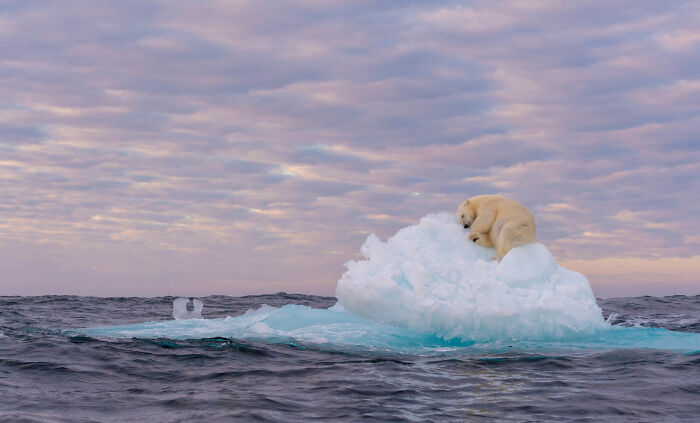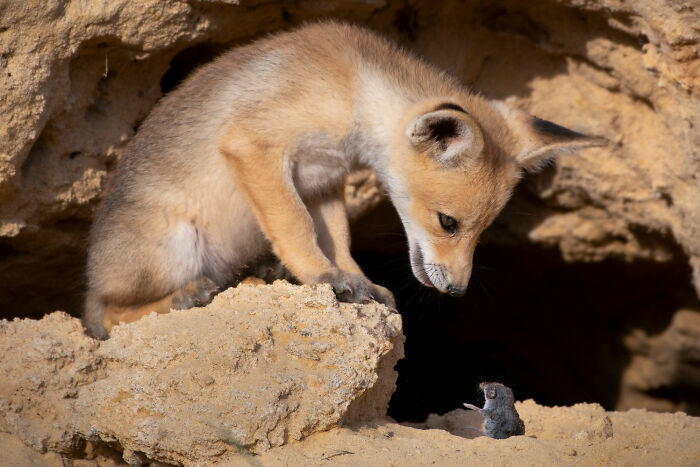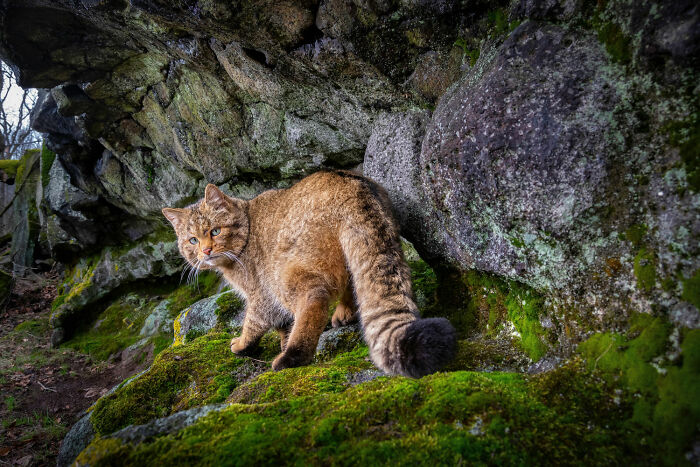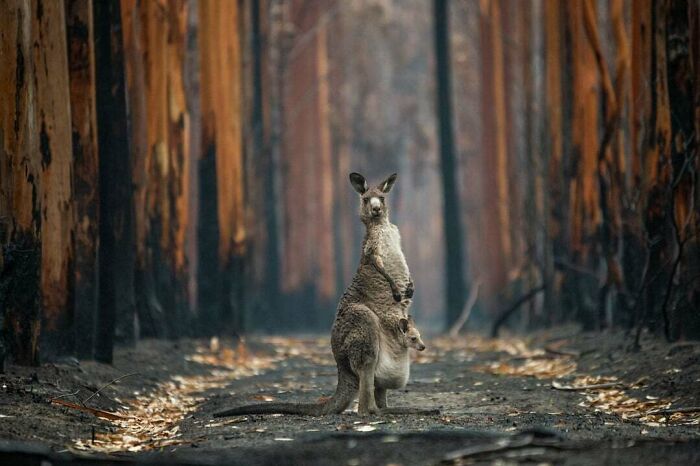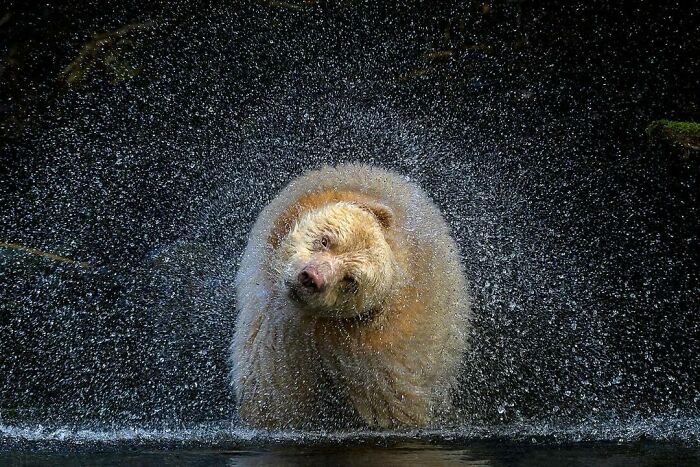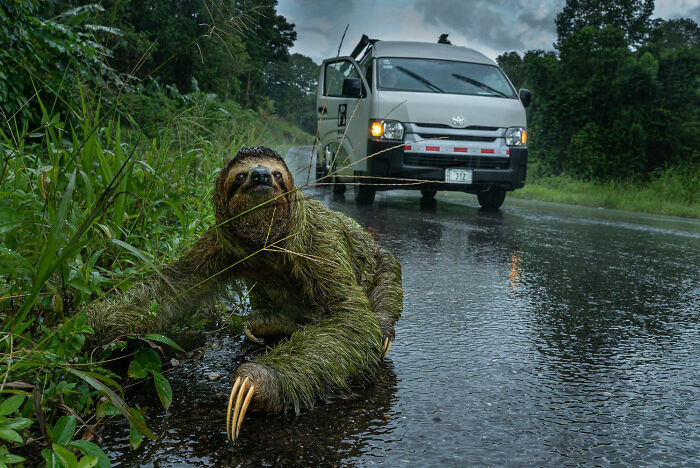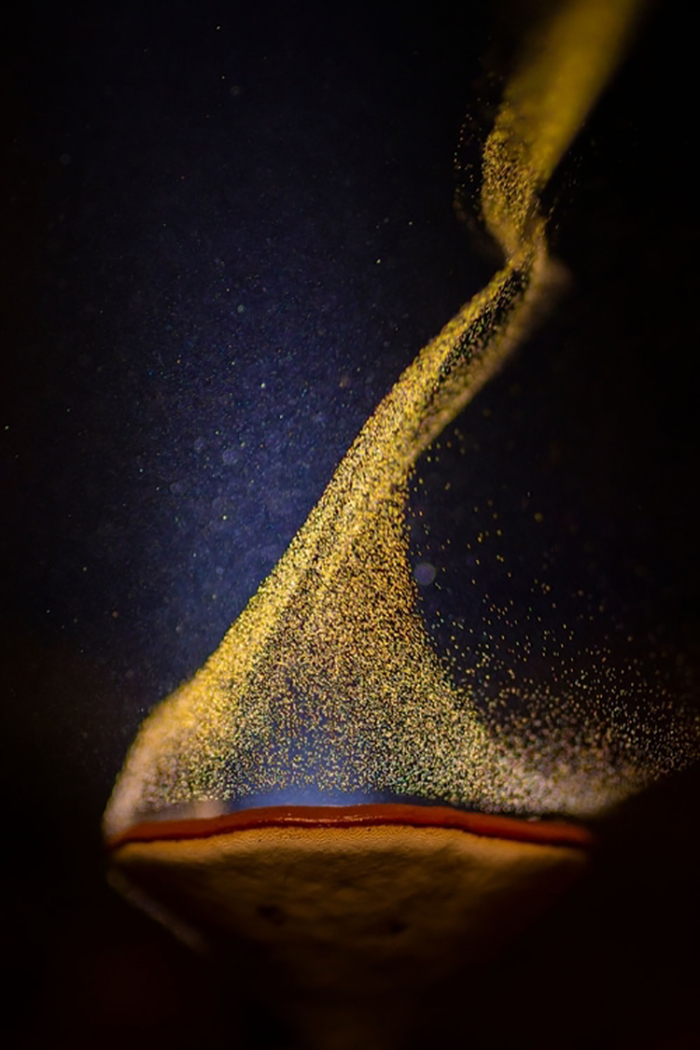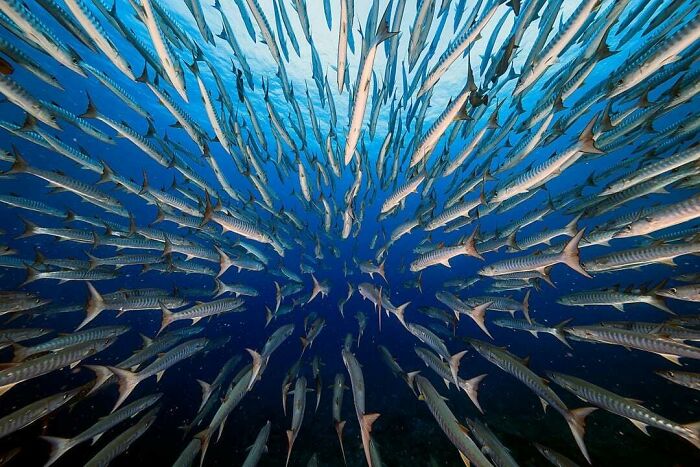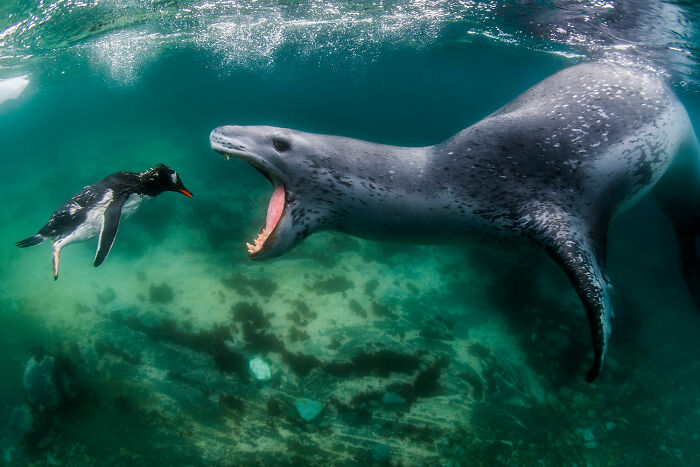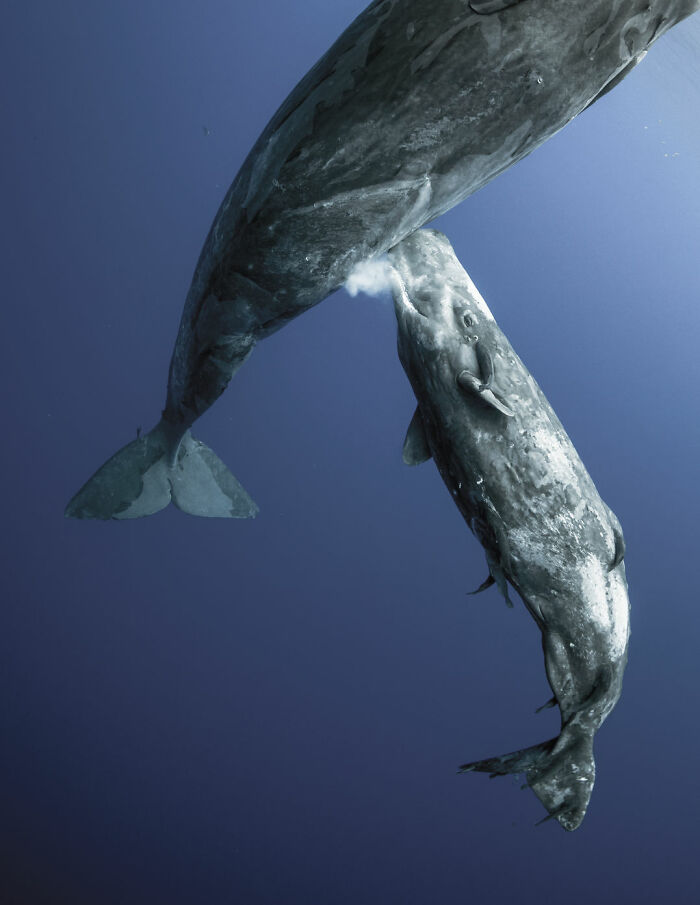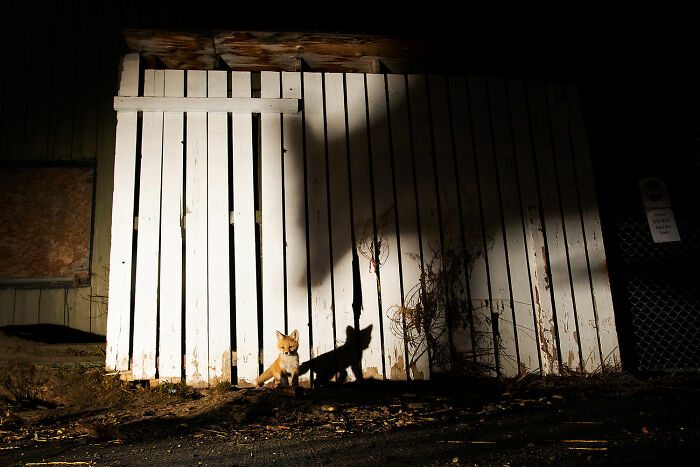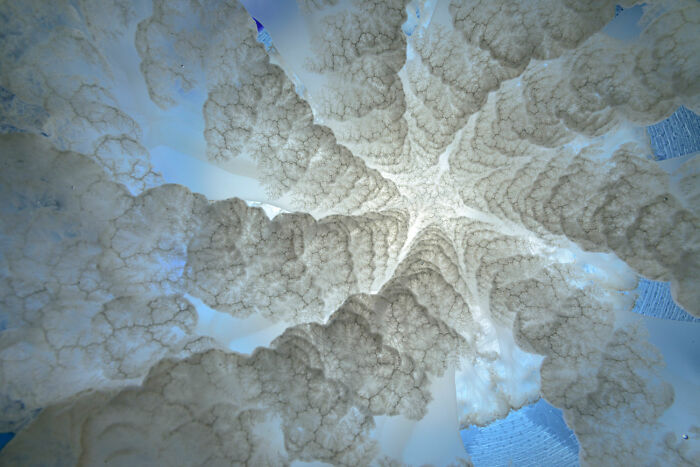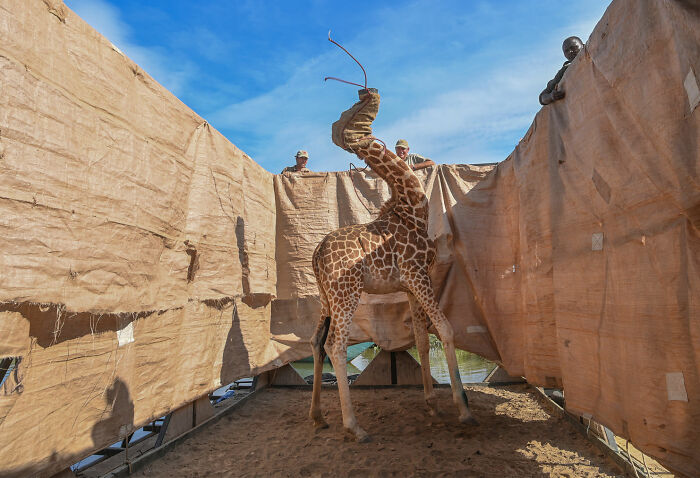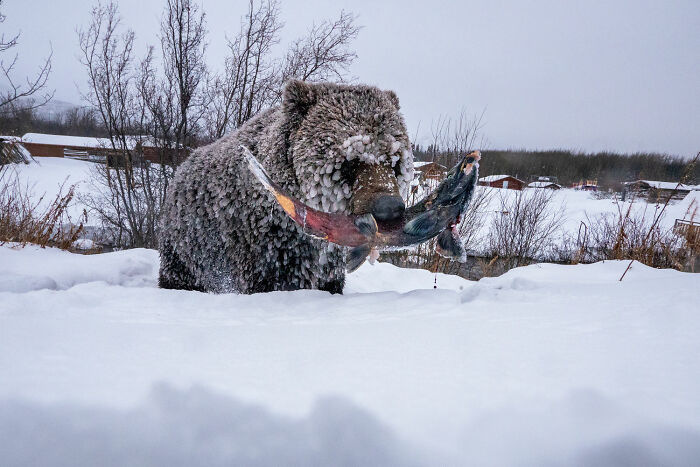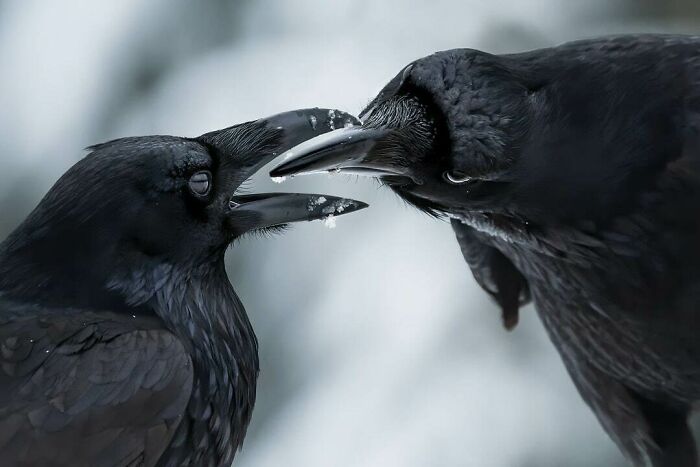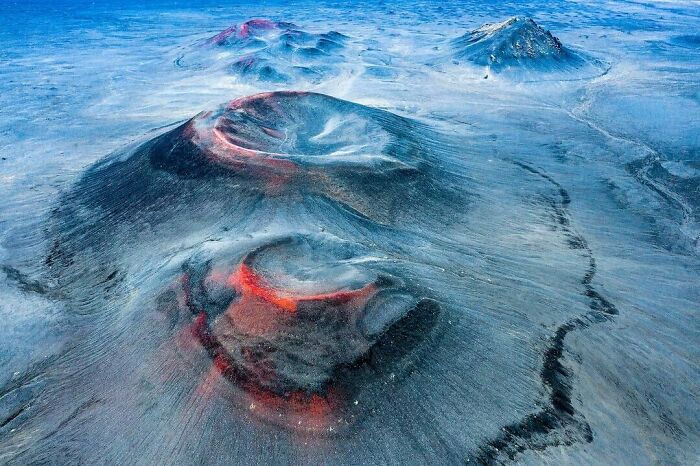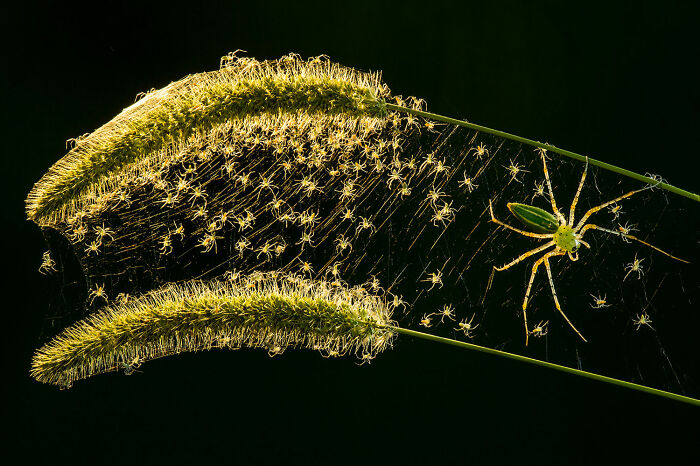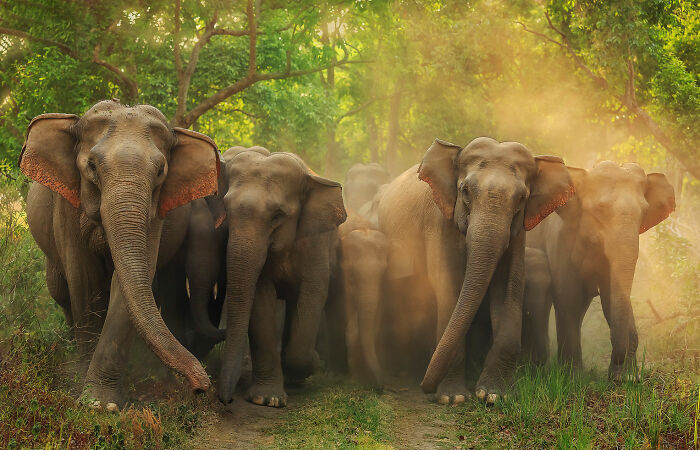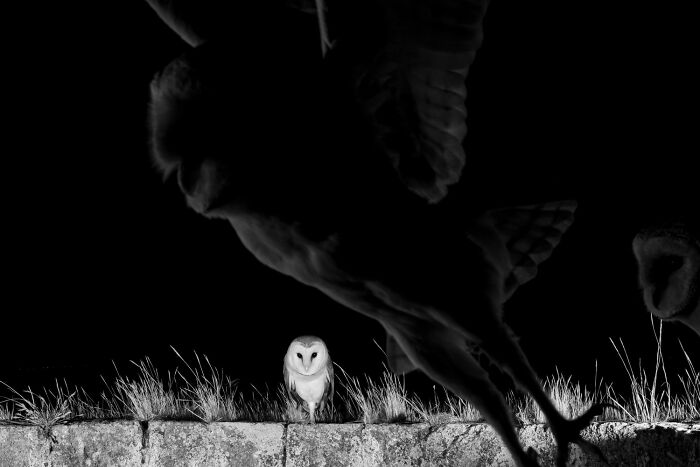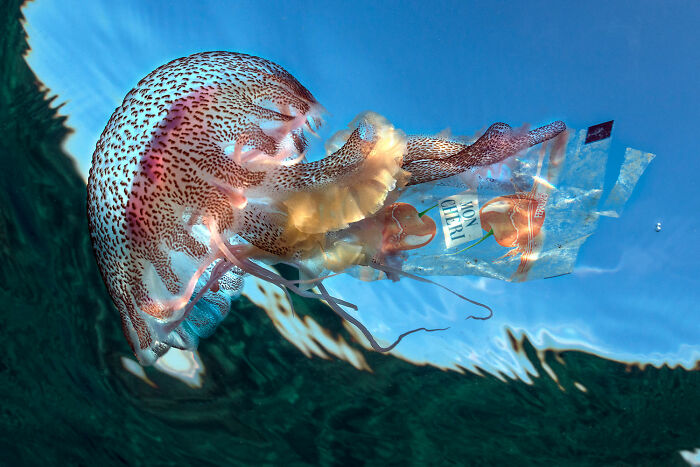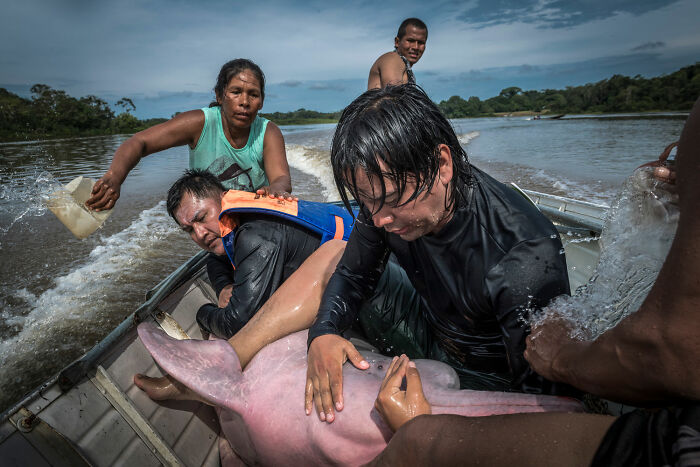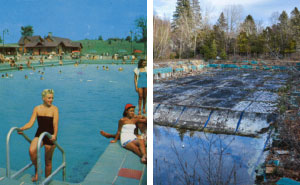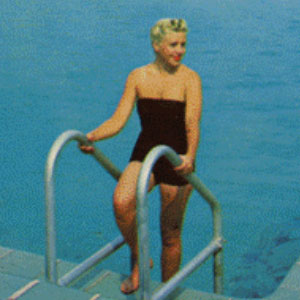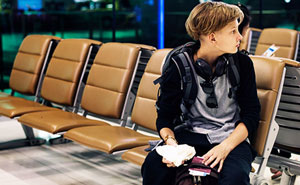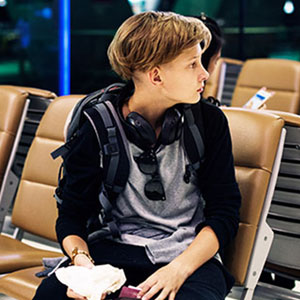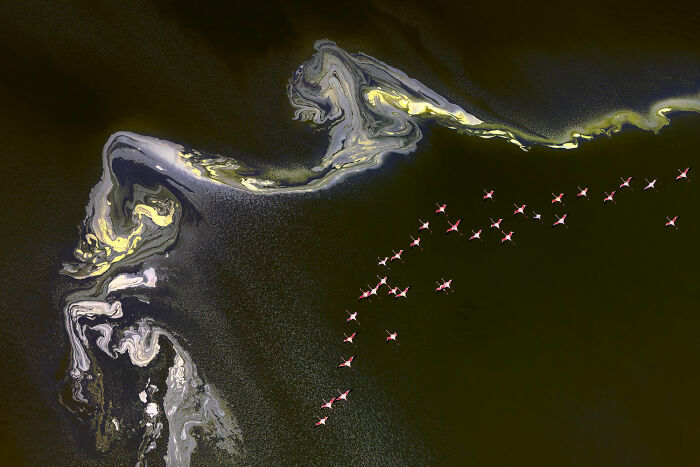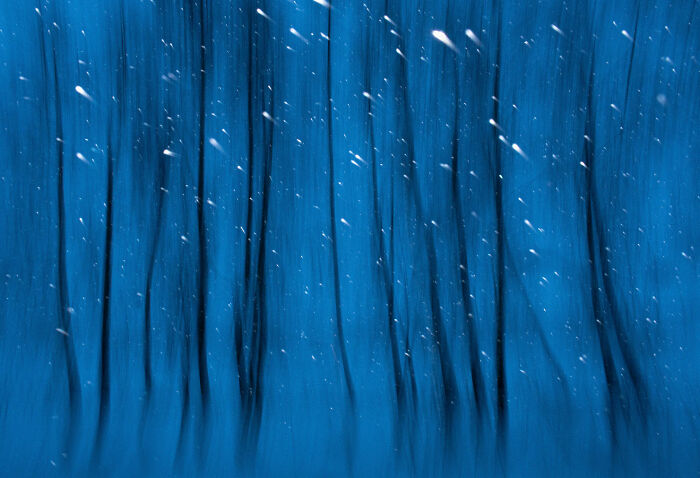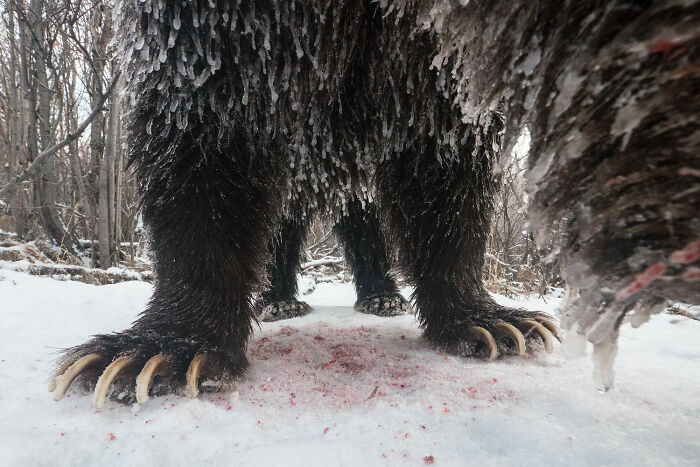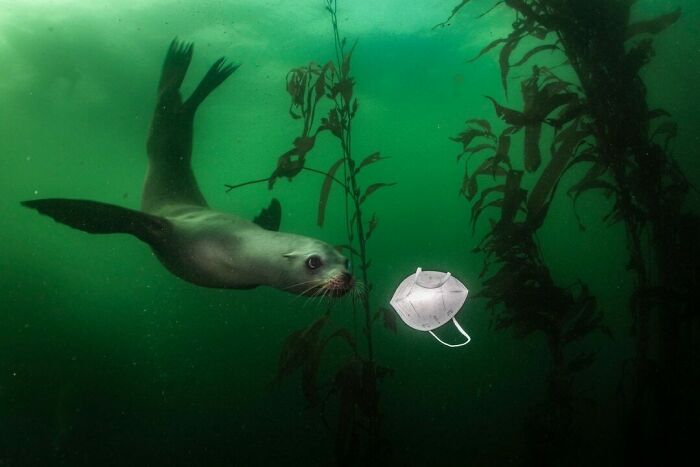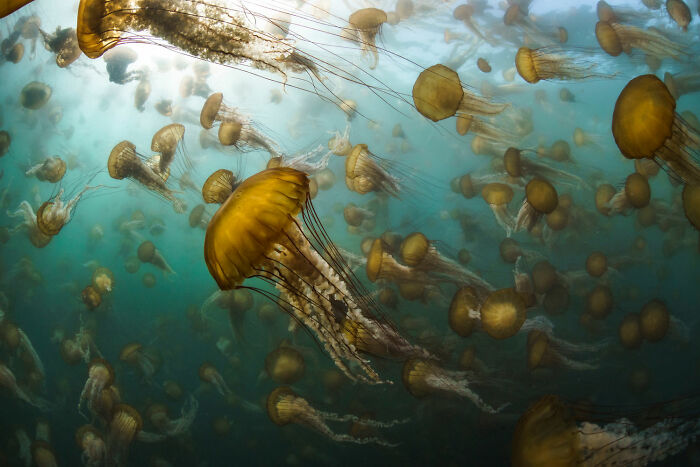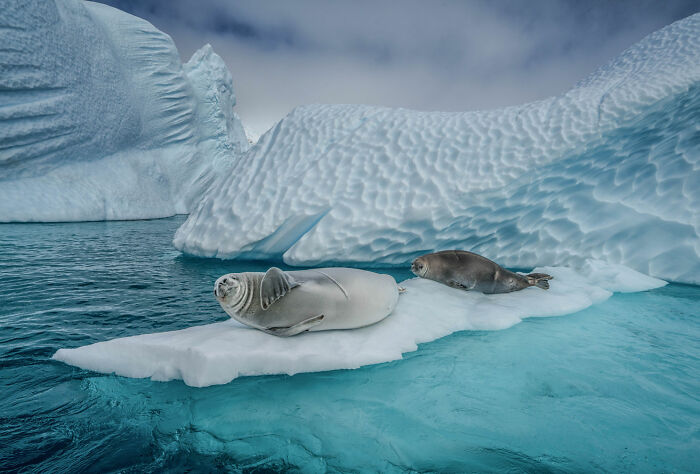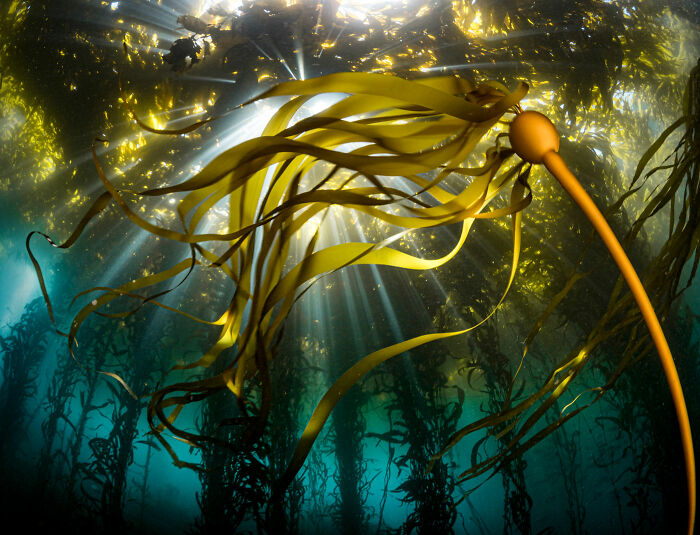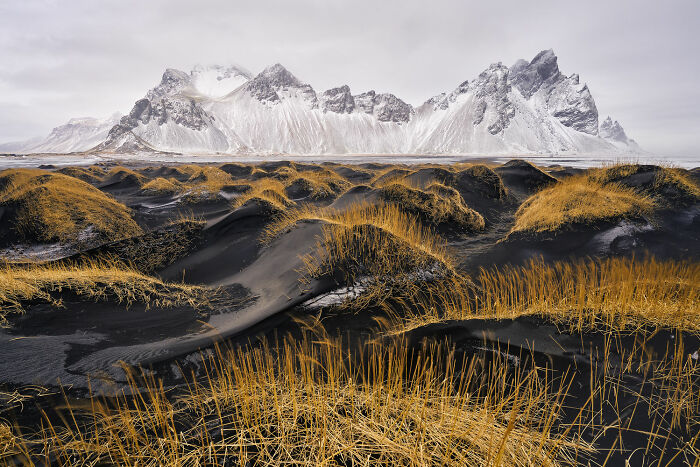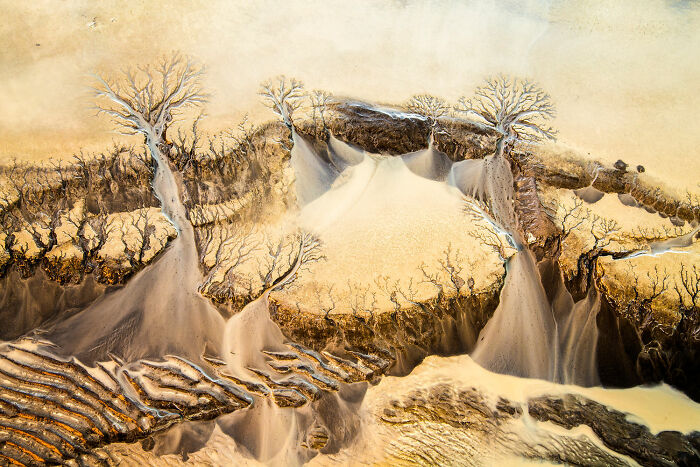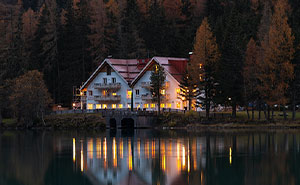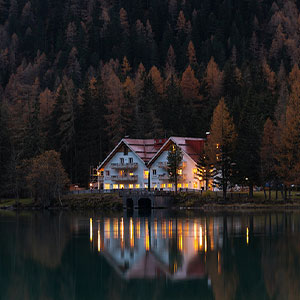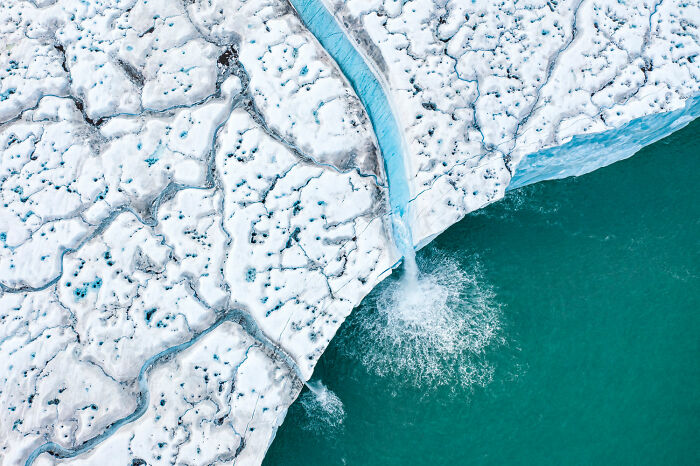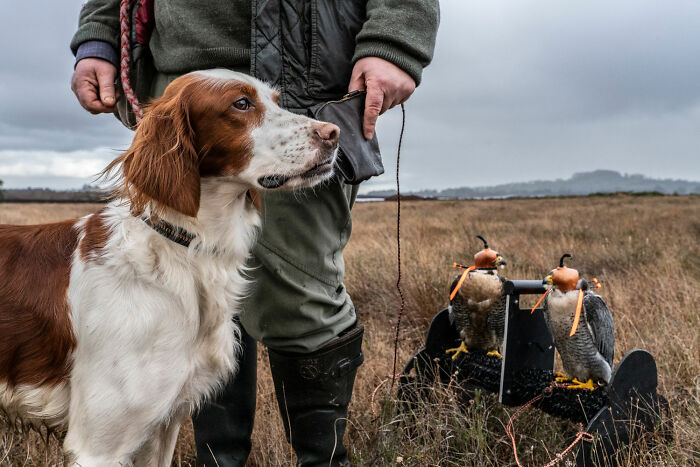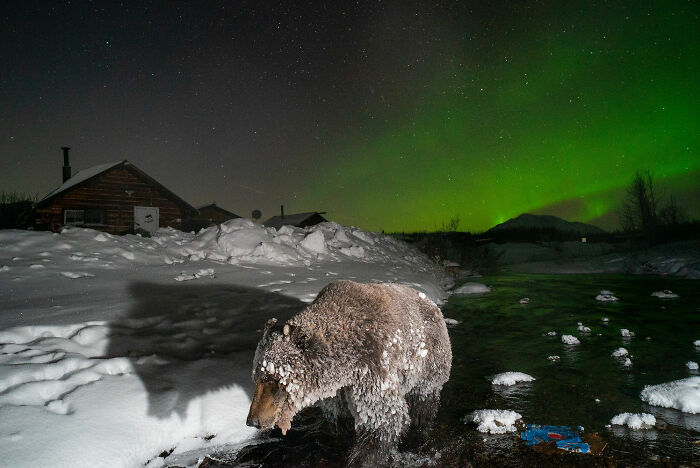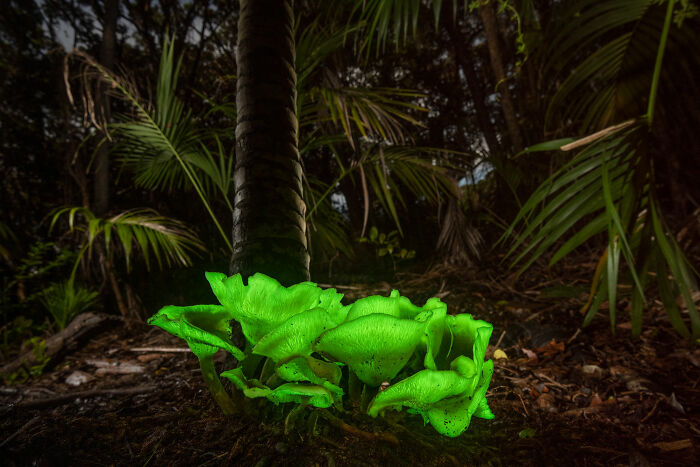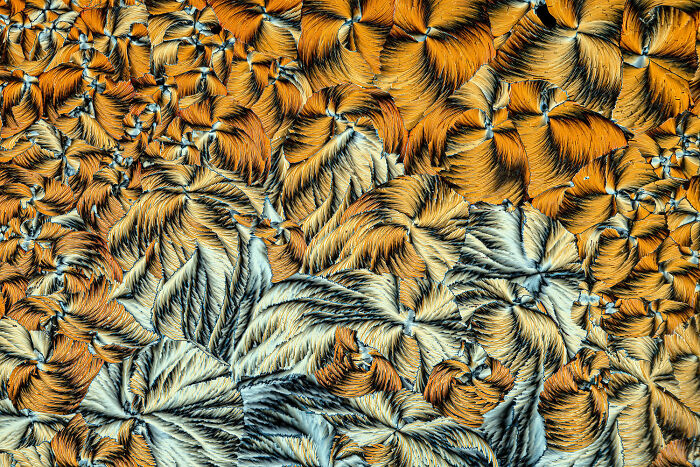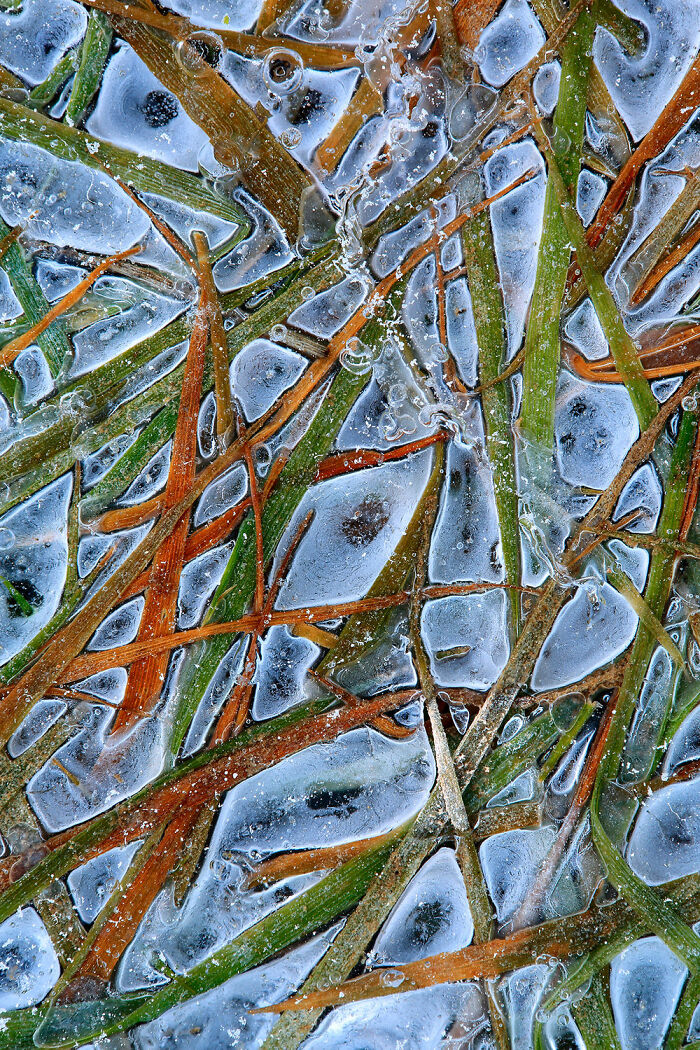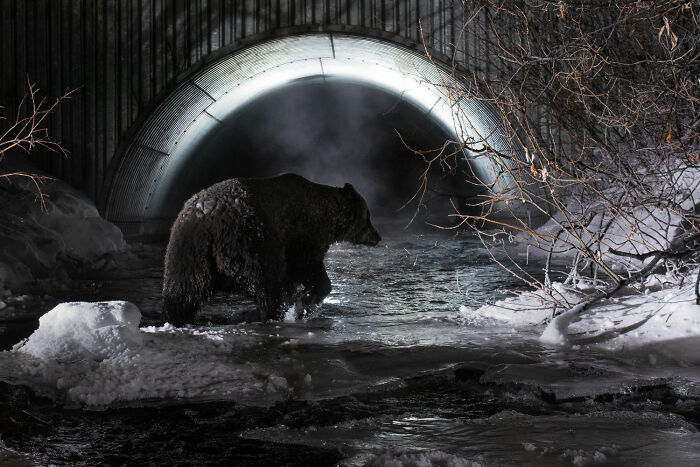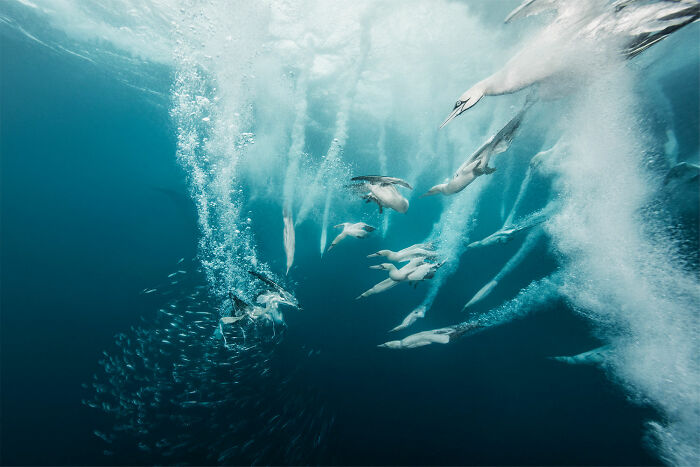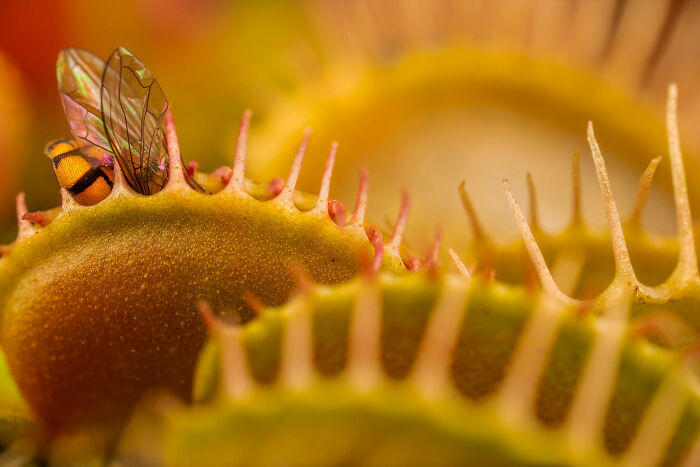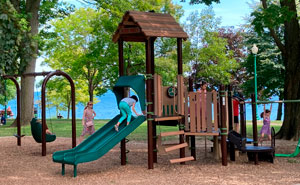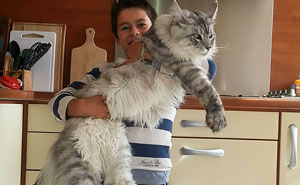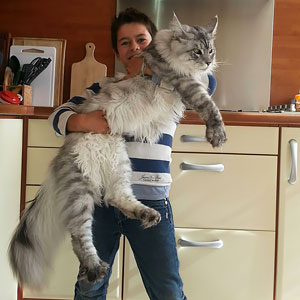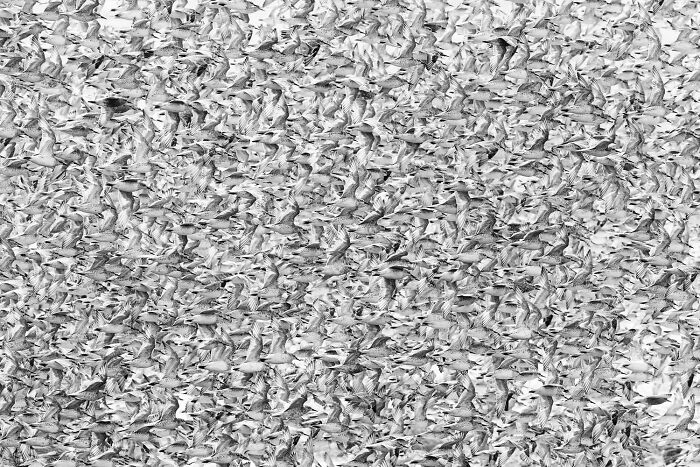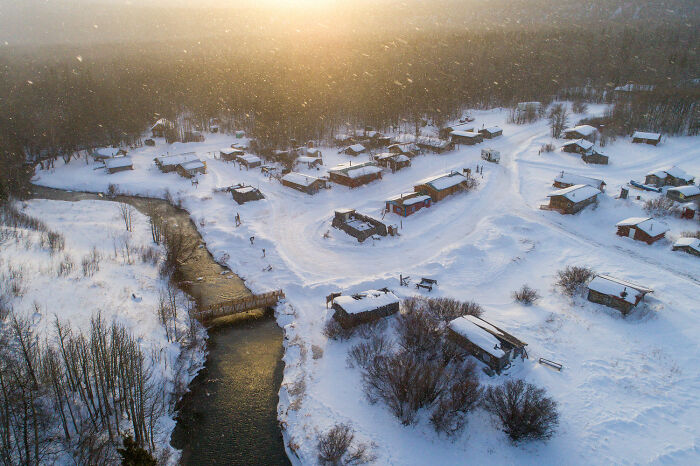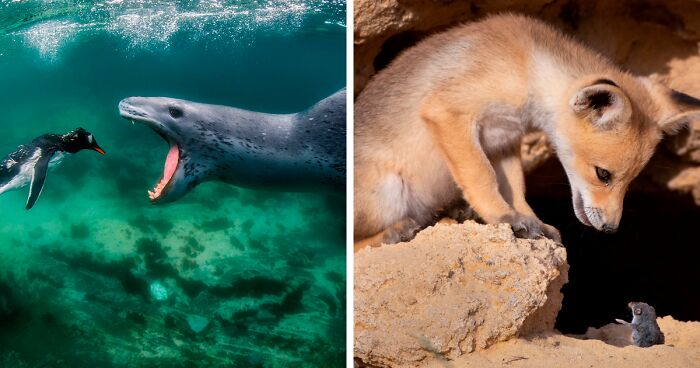
34Kviews
The 2021 BigPicture Natural World Photography Contest Reveals The Best Shots Of Mother Nature (30 Pics)
InterviewWho doesn’t snap a shot of their cutest pets while they're sleeping or a colorful butterfly when they’re at the park? We like to have a physical memory of what we thought was beautiful or interesting. But there are people who take photos for a whole different purpose.
People who submit their work to the BigPicture Natural World Photography Competition go above and beyond to catch the right picture at the right time. And though there is a monetary prize to the winner, the competition hopes that these breath-taking images from all around the world will inspire others to protect and conserve our planet.
More info: BigPicture | Facebook | Twitter | Instagram
This post may include affiliate links.
Aquatic Life, Finalist: 'Treasure On Ice' By marek Jackowski, Svalbard, Norway
As the disappearance of sea ice due to climate change becomes more evident, polar bears are rapidly losing their habitat. At dusk, this lucky male settled down on a small iceberg—a refuge for the night.
That's just so sad. I don't have words for it, my heart just breaks at what we have done
It’s the eighth year that the California Academy of Sciences has held the competition and the entries don’t stop amazing us. These images originally appeared on bioGraphic, an online magazine about science and sustainability and the official media sponsor for the California Academy of Sciences’ BigPicture Natural World Photography Competition. If you would like to see what bioGraphic is up to, you can follow them on Twitter, Facebook, or Instagram.
The photographers were invited to send pictures that showcase Earth’s biodiversity and show some of the mounting threats to the natural world.
If this is your first time hearing about this competition and you are interested to see the best shots from last year‘s competition, Bored Panda gathered them in this article.
Terrestrial Wildlife, Finalist: 'Tough Negotiation' By Ayala Fishaimer, Judean Foothills, Israel
An Arabian red fox cub emerging from its den sniffed a shrew out of the sand and began playing with it. For a brief moment, the hapless shrew appeared to be asking the fox to spare its life.
Terrestrial Wildlife, Finalist: 'Felis Silvestris' By Vladimir Cech Jr., Doupov Mountains, Czech Republic
The European wildcat (Felis silvestris silvestris) is rare, elusive, and difficult to photograph. After studying the area for several months, the photographer caught this image with a homemade DSLR camera trap, built in his photo studio in the forest.
The contestants could send their entries from December 1, 2020 to March 7, 2021 and then the jury, consisting of photographers and photo editors, chose their winners.
BigPicture Co-founder Rhonda Rubinstein explained to us how the judges pick a winner, "The judges vote on each image, using a 1-5 scale that takes into consideration originality, technical excellence, composition, overall impact and artistic merit. The votes are tallied, and the Grand Prize winner is the image that received the highest score overall, regardless of category."
The Grand Prize winner was awarded $5,000 and the categories that Rhonda Rubinstein mentioned are: Art of Nature, Aquatic Life, Winged Life, Landscapes, Waterscapes, and Flora, Terrestrial Wildlife, Human/Nature and Photo Story: Out of the Ordinary.
Grand Prize: 'Hope In A Burned Plantation' By Jo-Anne Mcarthur, Mallacoota, Australia
Iconic Australia is captured in this particular moment as a resilient kangaroo pauses in a burned eucalyptus plantation. Nearly three billion animals perished or were displaced in the cataclysmic Australian bushfires of 2019 and 2020. This eastern grey kangaroo and her joey represent the lucky survivors, escaping from an area that had been transformed by humans for farming and then devastated by fire.
Terrestrial Wildlife, Winner: 'Boss' By Michelle Valberg, Great Bear Rainforest, Canada
This spirit bear, one of only a few hundred white bears in this subspecies of black bears in the coastal rainforests of British Columbia, is known by the name “Boss.” After lowering his head into the river in search of salmon roe, he pulled his head up and shook, droplets spiraling around his head, looked at the photographer for a split second, and then plunged back into the water for his meal.
Human/Nature, Finalist: 'Why Did The Sloth Cross The Road?' By Andrew Whitworth, Osa Peninsula, Costa Rica
Getting to the other side of a vehicular road is a challenge, especially for a slow-moving sloth. Due to speed up is the movement to create arboreal bridges for animal crossings in biodiversity hotspots like Osa. Here, amidst stormy conditions, this beautiful moss-covered, three-toed sloth survived.
The winner this year is Jo-Anne McArthur, who is a Canadian photojournalist. Her photo, titled "Hope Amidst the Ashes," depicts a female eastern grey kangaroo with a baby kangaroo in her pouch standing surrounded by burnt trees.
McArthur is also an animal rights activist and she took this photo while accompanying Vets for Compassion as the organization searched for koalas injured in the Australian bushfires.
bioGraphic wrote, "For McArthur, it was a powerful moment: two of Australia’s most iconic species—the kangaroo and the eucalyptus tree—standing at a worrisome crossroads in their history. But the individuals in her frame were also symbols of hope, that life can persist against all odds."
Art Of Nature, Winner: 'The Goblet Of Fire' By Sarang Naik, Toplepada, India
This mushroom, illuminated by a simple flashlight, was one of many fungi growing around the photographer’s house in the countryside. During the monsoon season, the mushrooms released thick, yellow-brown spores throughout the day for almost a month—a common but often ignored phenomenon.
Aquatic Life, Finalist: 'Orcas Under The Arctic Sun' By andy Schmid, Skjervøy, Norway
Drawn to the fjord in search of herring that shelter from the open ocean each winter, this curious but protective orca mother allowed the photographer to swim nearby during the single hour that the sun shines through the fjord and into the water in mid-November.
When remembering what photographs the competition received the previous years and comparing them to this year's submissions, Rhonda Rubinstein admits that "The biggest trend was how many photographers discovered life and beauty in their own backyards or nearby environments! It is unusual to see so many photo locations match that of the photographers' home base."
That is understandable as everyone was traveling less and exploring their local areas. When asked about the challenges that the pandemic posed, BigPicture Jury Chair Suzi Eszterhas answered, "Rather than having challenges this year due to the pandemic, our judges had a major advantage in the fact that they weren’t traveling! Since most of our judges are professional nature photographers they have busy travel schedules and it can be a challenge for them to find the time (and a stable internet connection) if they are traveling during the judging period. But because most of us were stuck at home, we had more time to put into the judging this year."
Aquatic Life, Winner: 'Barracuda' By Yung-Sen Wu, Koror, Palau
The photographer swam with this battery of barracuda in the Blue Corner for four days, looking for the perfect angle. At the end of a 50-minute dive on his fifth day, the fish allowed him to swim among them as part of the school and he captured this fisheye view. On the sixth day, he joined the fish without his camera.
Aquatic Life, Finalist: 'Facing Reality' By Amos Nachoum, Pleneau Island, Antarctic Peninsula
The young gentoo penguin jumped into the lagoon to play during low tide, and was ambushed by the leopard seal, which had been lying in wait.
So the organizers and the judges found that the pandemic actually allowed them to spend more time evaluating the pictures. But how about the photographers? Well, it seems that this year the competition had an abundance of entries, "This year we received the highest number of images ever! 8,390 submissions—an increase of more than 30% compared to 2020," Rubinstein said.
She also had a few guesses what could have been the reasons for it, "Perhaps it was because photographers were at home and had time to look through their images and submit, perhaps it was because we encouraged more female photographers to enter by promoting a discount during the last month, or perhaps it was because we extended the deadline by a week. Likely answer: all of the above."
Aquatic Life, Finalist: 'Private Moment Of Milk Feeding' By mike Korostelev, Indian Ocean
A pod of sperm whales tolerated the photographer’s proximity long enough for him to catch one of the mothers nursing her baby, almost at the water’s surface. Not so easy to hold your breath and drink at the same time—for the baby whale, that is.
Do female whales have nipples or do they shoot their milk straight out of a gland? Does anybody know?
Landscapes, Waterscapes, And Flora: Finalist: 'Beautiful Water' By Kazuaki Koseki, Inawashiro, Japan
Ten years ago, the Tōhoku earthquake and tsunami struck the Pacific coast and triggered the Fukushima Daiichi nuclear disaster. The photographer took this photo in Fukushima Prefecture, an inland area now covered with virgin forest.
What do you think of these pictures? Which would you pick as the winner? Put your opinions in the comments and upvote the photos that are the most impressive in your eyes!
Human/Nature, Finalist: 'Foxfence' By Peter Mather, Whitehorse, Canada
A fox kit at its den in downtown Whitehorse, surrounded by other playful fox kits, photographed using a flash and patience. Urban foxes often den in fenced off areas, where they can quickly escape from coyotes and dogs.
Art Of Nature, Finalist: 'Vortex' By angel Fitor, Mar Menor, Spain
This unusual perspective of a barrel jellyfish—looking up through the tentacles and into the mouth, may be as close as we get to the fish-eye view as it is about to be eaten.
Surreal 🙉, like a cloud formation that an angel is about to descend through 👼😻😇
Human/Nature, Finalist: 'A Daring Rescue' By Ami Vitale, Ruko Community Conservancy, Kenya
Eight Rothschild giraffes were marooned as rising lake waters in Lake Baringo turned a rocky lava pinnacle into an island. During the ambitious rescue, the giraffes were hooded and transported on a makeshift raft across the lake to Ruko Community Conservancy. Saving the animals on an allegorical ark illustrates the extreme efforts required to keep endangered species alive.
Photo Story: Out Of The Ordinary: 'Klukshu Ice Bears 4/6' By peter Mather, Yukon Territory, Canada
A small grizzly who ventures out in the less ideal daytime (to avoid bigger bears) is rewarded with a freshly caught salmon.
Winged Life, Winner: 'Beak To Beak' By Shane Kalyn, Mount Seymour Provincial Park, Canada
After preening each other's feathers, the ravens took turns inspecting every nook and cranny in each other's beaks—talking to one another throughout the process. In three winters of observing the gift-sharing, grooming, and singing courtship behaviors of ravens on the mountain, the photographer had never witnessed anything like this.
Landscapes, Waterscapes, And Flora: Winner: 'Another Planet' By Fran Rubia, Fjallabak Nature Reserve, Iceland
What looked to be mountains from the ground turned out to be extinct volcanoes as captured by this drone shot taken on a cloudy day in June, at the time of the midnight sun. The unusual perspective of an inhospitable landscape stained by traces of iron oxide creates an otherworldly atmosphere.
Terrestrial Wildlife, Finalist: 'Microspur1' By Lung-Tsai Wang, Unspecified Mountains, Taiwan
The birth of dozens of lynx spiders is followed by two days of cannibalism until only one spider remains. This mesmerizing spectacle of the ultimate sibling rivalry can be observed annually in the mountains of Taiwan.
Terrestrial Wildlife, Finalist: 'Come High Water' By mac Stone, Audubon's Corkscrew Swamp Sanctuary, United States
"Come hell or high water" is a common southeastern saying that implies perseverance in the face of difficulties. This mother raccoon appears to be rescuing her baby from a flooded nest after a heavy rain in late October, in one of the handful of remaining old growth swamps in the southeastern United States.
Terrestrial Wildlife, Finalist: 'Jumbo Roadblock' By Jagdeep Rajput, Corbett National Park, India
This herd of Asian elephants had just arrived from an adjoining national park. Demonstrating both their right of way and their social behavior, the elephants marched slowly in formation, creating a protective front row that kept the young ones safe in the middle.
Winged Life, Finalist: 'Stages Of Life' By kurt Bertels, Nicosia, Cyprus
This camera trap image caught three young barn owls as they practiced flying from the top of an ancient well—while their parents were out catching rodents.
Human/Nature, Finalist: 'Mon Cheri' By Guido Villani, Naples, Italy
After a light storm drew a swarm of jellyfish and released a sizable amount of litter into the port of Bacoli, this mauve stinger carried off a discarded plastic chocolate wrapper in its tentacles. These beautiful little jellyfish, which phosphoresce when disturbed, are much feared for their painful stings.
Photo Story: Out Of The Ordinary: 'Klukshu Ice Bears 2/6' By peter Mather, Yukon Territory, Canada
An ice bear known to the locals as “The Mayor”— because he is the dominant male in the area—uses a fallen tree to cross Klukshu Creek.
Human/Nature, Finalist: 'Dolphin’s Hug' By Jaime Rojo, Puerto Nariño, Colombia
To document the first-ever tagging event of an Amazon River Dolphin, the photographer joined the scientific team on a weeklong pursuit. After six days in pouring rain, they found one—and en route to the veterinary station for tagging, a concerned team member soothes the dolphin.
Does anyone know why they aren't tagging on site instead of stressing and endangering it by transporting? That seems counterintuitive to all my years of rescue and the research I've done.
Winged Life, Finalist: 'Flamingo Flying Over Lake Magadi' By yang Jiao, Magadi, Kenya
These greater flamingos were photographed from a helicopter over Lake Magadi, a salt lake in the Great Rift Valley of southern Kenya whose mineral deposits reflect light in ever-changing patterns.
Landscapes, Waterscapes, And Flora: Finalist: 'Tree Of Life' By anette Mossbacher, Ruacana Falls, Namibia
Light from the quickly setting sun highlights this cliff-dwelling baobab tree as shadows move up the valley. The waterfall is a surprising backdrop for this ancient tree, which has adapted to extremely arid conditions.
Art Of Nature, Finalist: 'Little Comets' By Alexey Korolyov, Kremyonki, Russia
Snowflakes become comets flying through the air, and the dark trunks of birch trees sway lightly in the twilight of this painterly image. The enchanting illusion was achieved by combining an on-camera flash, high aperture, and intentional camera movement.
Photo Story: Out Of The Ordinary: 'Klukshu Ice Bears 5/6' By peter Mather, Yukon Territory, Canada
“The Mayor”—recognizable by his large size and unique blonde claws—finishes a salmon meal near the photographer’s remote camera.
Human/Nature, Winner: 'Sign Of The Tides' By Ralph Pace, Monterey, United States
In this perfectly composed photograph, a discarded face mask in the shape of a sea turtle attracts a notoriously curious California sea lion. Shot in November 2020, this was the first time the photographer saw a mask underwater, but unfortunately he has seen many since. The effects of the pandemic will likely linger on our oceans for years to come.
Aquatic Life, Finalist: 'Jelly Smack' By joseph Platko, Monterey, United States
This smack of jellyfish was one of the largest and densest the photographer had ever encountered. To get this photo without disturbing them, the photographer freedove and took advantage of unusually clear waters devoid of summer algal blooms—which typically coincide with the invasion of Monterey Bay by Pacific sea nettles.
Aquatic Life, Finalist: 'Crabeater Ice Palace' By Cristina Mittermeier, Antarctic Peninsula
Crabeater seals lounged on an Antarctic iceberg as the photographer passed by on an inflatable boat. This expedition photograph was created as an argument for the protection of the Antarctic Peninsula—where billions of tons of sea ice have been lost—as the largest sanctuary on Earth.
Landscapes, Waterscapes, And Flora: Finalist: 'Fight Of A Light-Time In The Kelp Cathedral' By Patrick Webster, Carmel Bay State Marine Conservation Area, United States
The bull kelp streams towards the rays of sun that penetrate the kelp forest in a unique convergence of kelp species in Monterey on a rare sunny day. This thriving scene may also become increasingly rare as the kelp is being decimated by sea urchins whose population is no longer being held in check by their predators—due to sea star wasting syndrome.
They pioneered the growth techniques for these kelp. Now they travel the world teaching other aquariums how to do the same. The kelp grows around 12 inches (28.8 cm) in 24 hours.
Landscapes, Waterscapes, And Flora: Finalist: 'Difference' By Ivan Pedretti, Stokksnes Beach, Iceland
A colorless Iceland sky over the snow-covered Vestrahorn mountain helped create a startling contrast to the black sand and dry yellow grass of Stokksnes Beach.
Art Of Nature, Finalist: 'The Sands Of Time' By manuel Ismael Gómez, Höfn, Iceland
Near the tongue of a glacier, several days of snow and ice had melted into puddles over very fine sand. The slow drainage of meltwater filtering through different levels of sand created fractal configurations similar to the flow of meltwater creating rivers over mountain terrain. But here it's on a surprisingly small scale: only 2–3 square yards.
Art Of Nature, Finalist: 'Melting Ice Cap' By Florian Ledoux, Svalbard, Norway
This drone shot reveals the alarming rate at which the Austfonna ice cap is melting due to climate change. A few weeks before this photo was taken in the summer of 2020, the temperature in Svalbard reached almost 70º Fahrenheit—its hottest day on record.
Human/Nature, Finalist: 'Snipe Hawking' By Jen Guyton, Midlands, Ireland
After the Irish red setter locates a snipe in the bog and points out its position, the unhooded peregrine falcon circles at the ready until the dog flushes the bird out of hiding. This form of falconry is a use of endangered Irish peat bogs that is more sustainable than the destruction wrought by harvesting peat for fuel, though hunting is a complicated approach to conservation.
This is not a "red setter". It is a Brittany. Whoever captioned this picture thought that it was "Red and White" Setter that looks like a Brittany. They were almost extinct some years ago, down to SIX breeding stock. All Red and Whites are descended from those six. The ears on the dog in the picture are too short for a Red and White as well as the head is not narrow and elongated. In addition, the dog is "too short."
Photo Story: Out Of The Ordinary: 'Klukshu Ice Bears 6/6' By peter Mather, Yukon Territory, Canada
Late December under the Northern lights, after the fish are finished, the bears move to the high mountains to dig their snow dens and begin hibernation.
Terrestrial Wildlife, Finalist: 'Running Atta' By Petr Bambousek, Boca Tapada, Costa Rica
Leafcutter ants (genus Atta) carry leaves and other plant parts to nourish the fungus gardens in their underground nests—which they harvest to feed themselves and their young. The dance-like movement is highlighted by skillful exposure techniques on the ant delivering its unusually colored leaf.
Landscapes, Waterscapes, And Flora: Finalist: 'Ghost Fungi' By Justin Gilligan, Lord Howe Island, Australia
Ghost fungi grow in wet forests of endemic kentia palms in the southern mountains on this tiny volcanic island. At night, the luminescence attracts snails and slugs, which might eat the fungus or brush against it and carry the spores elsewhere.
Art Of Nature, Finalist: 'The Beauty Hidden By Malic Acid' By peter Juzak, Springe, Germany
This unique moment was captured during the crystallization of malic acid, an organic compound that makes fruit sour. The malic acid, sprinkled on a slide, melted on a hotplate, and then cooled, was photographed under a microscope with polarized light. The fantastic patterns continually change as the crystallization progresses.
Art Of Nature, Finalist: 'Frozen' By Petra Draškovič Pelc, Cerknica, Slovenia
Lake Cerknica, the largest lake in Slovenia when full, disappears entirely during the dry season, which is typical of karst lakes (formed when caves collapse). As the lake begins to melt and ice skating gives way to hay mowing, the macro scale is revealed only by small bubbles in the ice.
Photo Story: Out Of The Ordinary: 'Klukshu Ice Bears 3/6' By peter Mather, Yukon Territory, Canada
The bears often hunt at night when the fish can’t see them, but the bears can sniff out the salmon spawning beds.
Winged Life, Finalist: 'Fly Underwater' By keding Zhu, Port Saint Johns, South Africa
Every August, millions of sardines migrate north along the South African coastline, and are herded by dolphins into bait balls to become mouthfuls of prey. As the fish try to escape to the surface, cape gannets dive bomb into the water to feed—the air released from their feathers creating dense trails of bubbles.
Landscapes, Waterscapes, And Flora: Finalist: 'Snared' By nick Kanakis, Brunswick County, United States
In this macro shot, the detailed structure of the Venus flytrap is beautifully apparent, as is its technique—with a captured hoverfly. This plant species is endemic to a small stretch of wet longleaf pine habitat in the sandhills and coastal plains of the Carolinas.
Winged Life, Finalist: 'Red Knots, Red Knots And More Red Knots...' By Anja Brouwer, Ameland, Netherlands
Thousands of red knots were packed together in a high-tide refuge on the edge of the Wadden Sea, one of the most important stops along their migration route. The photographer captured the moment after a young peregrine falcon came to hunt and the sandpipers took to the air en masse.
Winged Life, Finalist: 'Orange Tint' By Ashane Marasinghe, Wilpattu National Park, Sri Lanka
The Sri Lankan junglefowl, the national bird of Sri Lanka, is a flightless bird with colorful feathers whose ancestor is closely related to domestic chickens. Not to be upstaged, the blood-sucking batfly has evolved to maneuver through such feathers.
Photo Story: Out Of The Ordinary: 'Klukshu Ice Bears' By Peter Mather, Yukon Territory, Canada
Each winter, grizzly bears go fishing near Klukshu and other First Nations villages of the Yukon, delaying their hibernation to catch some of the late spawning salmon runs. Fishing in subzero temperatures, when the creek water freezes to their fur, the bears are covered in icicles that dangle as they walk, tinkling like chandeliers. But with winter arriving later each year, and rivers—which carry the salmon—disappearing due to receding glaciers, this extraordinary ice bear phenomenon may melt away.
